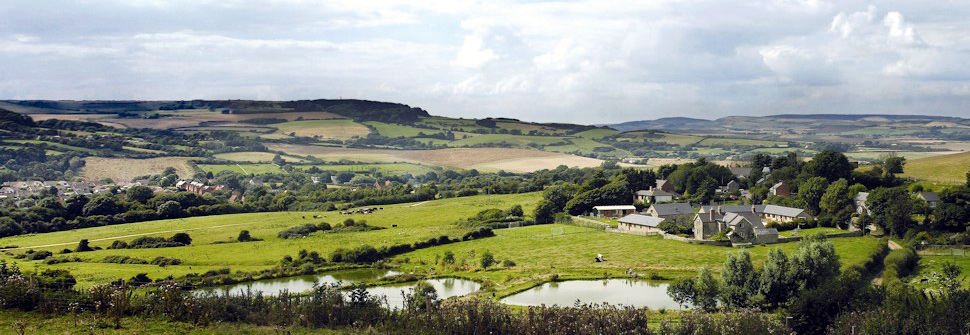Shalfleet
The parish of Shalfleet is very extensive, including the villages of Ningwood, Wellow, Thorley, Cranmore, Hamstead and Bouldnor.
Shalfleet is the main village of the group, and with its big church, manor, mill, inn and quay has obviously been a place of importance. Its records go back beyond Domesday Book, and it still exists today as a complete pattern of a feudal village. It is situated on the Caul Bourne, a little above the point where it becomes tidal and forms an arm of the Newtown estuary known as Shalfleet Lake. The name comes from the Saxon "Scealdan fleot", meaning the shallow stream or creek.
The Church is partly pre-Norman. Its immensely solid tower – a great blockhouse with walls five feet thick – seems almost like a fortress. Built into these walls is a spiral stone staircase, a construction not lightly undertaken, which indicates its probable former use as a watch-tower, with its commanding view over the creek. There may have been a warning beacon on top of the tower, and certainly until 1779 a great gun was kept in its base.
Much of the history of Shalfleet has disappeared in the mists of time – even the dedication of the Church has been forgotten. About ten years ago, the parish apparently feeling the want of a patron saint, the Church was re-dedicated to St. Michael the Archangel, but this was probably not the original dedication.

In some old prints the church tower is shown adorned by a sort of
cupola, and later on for about a hundred years it had a spire, but this
became dangerous and was removed early this century. There are
still two bells, but formerly there were more. An old rhyme goes :
Shalfleet poor and simple people
Sold their bells to buy a steeple
and it seems likely that two bells at Thorley Church may have been
originally at Shalfleet.
The new Vicarage was built in the 1930s, but the lovely old pond in front of it is said to date from Roman times. The Old Vicarage, below the Church, is a pre-Reformation Clergy-house, part of the 14th century roof remaining. It belonged to the Church until 1871, when the Commissioners sold it into private ownership.
The earliest parts of the Manor, as it now stands, are Elizabethan, but a great deal is Jacobean. At one time it belonged to the Worsleys of Appuldurcombe, and was leased to Thomas Hollis, a name long associated with Shalfleet, as is that of the Paul family.
The mill was valued at eleven pence in Domesday Book. It is typical of the old manorial village mill, with its built-up contour leat which it was the tenants' duty to maintain. One of the last mills in the Island to cease working, it was sold in the 1960s with its machinery still complete; but everything removable was dispersed as scrap, and the mill became sadly derelict until rescued by new owners.
The great shaft and crown wheel, still going right up through the centre of the house, are a spectacular feature. Opposite-the mill is the Mill Cottage which not so very long ago was the bakery. During its renovation a bag of farthings was found in a recess in the old bake- house wall – they were used for giving change when bread was sold there at lid. a loaf.
The Quay is now National Trust property, and a great resort of sailing people. Once it was a very busy place with warehouses and stores and a great barn where corn was stored for shipment. Coal and slate came by sea, and the boats took back cargoes of grain.
At the centre of the village where the two roads cross is the New Inn, which is not new at all but about two hundred years old. The taproom with its stone flags, scrubbed tables and great chimney place is a piece of the past preserved intact. Opposite stands a big stone house, sometimes called the Malthouse, where the beer was brewed. In 1853 it was occupied by William Pinhorn, who at that time was tailor, sexton and postmaster, for in that year the first Post Office was opened there.
In 1798 John Nash the architect came to the Island, and five years later bought the Hamstead estate as a country retreat. Nash was a generous benefactor of Shalfleet, and employed thirty paupers from the Poorhouse to help reduce the very heavy poor rate. In 1833 he gave eighteen acres to provide employment for the poor. He had a big brickyard beyond the Salterns on the west side of the estuary, and the manager's house stood overlooking the creek. All signs of this vanished when the area was used during the last war for training invasion forces. The manager of the brickworks was John Lindsay, who emigrated to the United States, and one of his descendants became Mayor of New York.

